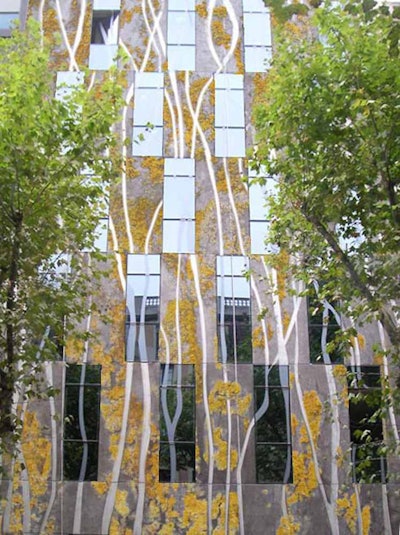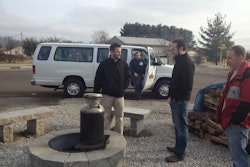
They also capture CO2 and provide insulation–you just have to deal with the fact that they need support structures that stress building walls and require lots of maintenance.
Not so with the biological concrete developed by researchers at Barcelona’s Universitat Politècnica de Catalunya (UPC).
The concrete requires no support structures because it actually supports fungi, moss, lichen and microalgae growth on its own.
UPC’s biological concrete is just regular concrete (carbonated concrete and concrete made with magnesium phosphate cement) with some tweaks of the material’s pH, roughness and porosity.
In the end the researchers are left with a four-layer concrete panel: a waterproofing layer, a structural layer, a biological layer that captures and stores rainwater and a coating layer that lets rainwater in and keeps it from leaving.
Read the full article here.
– Ariel Schwartz










